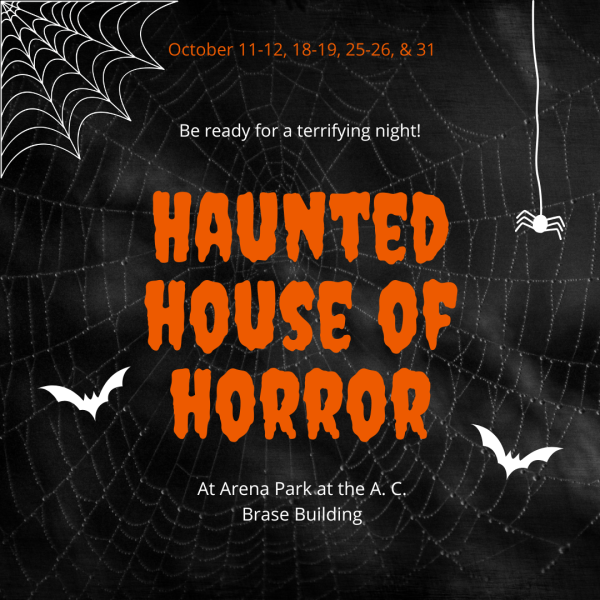Class Presentations and Anxiety
It’s time for James to get up there. His legs are shaking, his sweat is running cold, and his vision is beginning to tunnel as he does the walk of shame towards the front of the classroom. It feels as though all eyes are on him, judging his every move. If he backs out, he may fail the assignment; if he presents in this condition, he may fail from his nerves getting the best of his speech. James is stuck, he feels. Many students all around the world may empathize with this situation too, and in the United States, students are starting to protest against presentations in the classroom. Specifically, getting rid of them for students with “anxiety.” What was James actually going through? Was he just experiencing nervousness, or was he having what is called an anxiety induced panic attack? (Anxiety attack) Depending on who one asks; some might say he’s just nervous, and others might say yes, he was having an anxiety attack.
While anxiety is a natural response for any animal feeling a threat to their wellbeing, it oftentimes goes away after the threatening situation ends. But, it can become pathological (reoccurring) in humans according to Dr. Thierry Steimer, a journalist from the National Center for Biotechnology Information (NCBI). Although someone would stop feeling anxious after his or her presentation is over, but it’s possible for someone to have an anxiety attack and may need medical attention, this is a rare occurrence for humans. According to the Mayo Clinic, people only have one to two panic attacks a year on average.
So, if this is the case, why are students protesting against giving class presentations due to anxiety? According to an article by Taylor Lorenz from The Atlantic, a 14-year old student by the name of Ula said, “Nobody should be forced to do something that makes them uncomfortable…even though speaking in front of the class is supposed to build your confidence…I think that if a student is really unsettled and anxious because of it, you should probably make it something less stressful.” In contrast, one woman recently publicly tweeted on this subject and said, “Coming from someone with severe anxiety, having someone to force me to do a public presentation was the best idea to happen in my life.”
Oral communication is one of the most sought after skills in the workplace with over 90% of hiring managers saying it’s important according to a recent survey by the Association of American Colleges and Universities. A Twitter user by the handle, MightyKeef, on September 10 tweeted,”…exposure therapy is commonly used amongst psychologists as a behavior therapy to help treat anxiety disorder.” To further back this information, an anonymous Cape Central High School (CHS) teacher said, “Yeah, my therapist told me to just keep driving on the bridge that caused me to have so many anxiety attacks, and eventually, I got over it for the most part.”
What if a student does claim they cannot present due to anxiety? How can you tell whether or not they’re saying so just to get out of the assignment? According to the Marist Poll, 37% of adults are self-diagnosed. The Depression Association of America (ADAA) says that only 18.1% of the US population suffers from any kind of anxiety disorder. This includes, but is not limited to, General Anxiety Disorder (GAD), Post-Traumatic Stress Disorder (PTSD), Social Anxiety, or Panic Disorder (PD) and according to the We Are Teachers website, only 3.1% of the population is actually diagnosed with GAD. It is safe to say that if any student does suffer from severe anxiety due to presenting in class, he or she should have a note from their doctor showing proof.
In a poll issued by the Tiger Newspaper, CHS students gave their perspective on presentations in the classroom. While 67% of students said they suffer from anxiety, 61% of students said they are not diagnosed with any type of anxiety disorder. Sixty-seven percent of these students also said they have never suffered an anxiety attack when called on by a teacher to answer a question while 61% of students feel comfortable with presenting in class.
As for why or why not students with claimed anxiety should be required to present in class, one anonymous student said, “You shouldn’t be excused from doing things that even people with way worse mental illnesses have to do at some point. You can’t live your life behind your problems.” This student went on to say, “The more you strive to improve and control your anxiety, the easier it will be to persevere.” In many of the responses to this survey, students that had this same viewpoint, with and without anxiety.
Though there are many students speaking out against presentations in the classroom, what about teachers? It is commonly said that there are many teachers that teach with anxiety. Is there any truth to this? According to BBC News, a survey issued found that 79% of teachers experience work-related anxiousness. As for their thoughts on students giving presentations in class, one high school history teacher from Connecticut, Ryan Jones, said, “My thoughts are that we are in the business of preparing students for college, career, and civic life. Public speaking is a piece of that preparation…pushing outside of comfort zones is also a big part of what we do [as teachers].”
Should in-class presentations be taken out of high school curriculum? There is no right or wrong answer to this, however, it has been proven that in-class presentations help build important life skills that are needed academically and work-wise. Just as one CHS student said, “You will not grow if you don’t learn to achieve anything even with whatever problems life throws at you.”

Favorite Quote: "Any fear, any memory will do; if you have a heart at all, someday it may kill you."
Favorite Food: Sushi
Fun Fact: Sei loves classical music.












